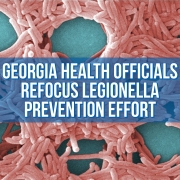Costs of Water Pollution, a Global Scourge, ‘Underestimated and Underappreciated’
World Bank report highlights extensive damage to health, ecosystems, and economies.

At K. V. Muniraju’s farm near Vijayapura, in the southern Indian state of Karnataka, raw sewage pumped from a cesspool flows onto crops. Photo © J. Carl Ganter/Circle of Blue
By Brett Walton, Circle of Blue
The world’s water challenges, messy as they are, can be neatly summarized: Too much, too little, too dirty.
An eye-opening World Bank report argues that insufficient attention is paid to the latter challenge, the stealthy yet widespread scourge of water pollution. Through original research and a battery of existing studies, the authors make the case that contaminated water, an “invisible crisis” that will worsen as the planet warms, is far more damaging to health, ecosystems, and economies than is commonly understood.
“Bad water quality shortens lives, shortens people [by stunting their growth], and it shrinks the economy,” Richard Damania, the report’s lead author, told Circle of Blue. “It’s bad all around.”
An intuitive conclusion? Perhaps. But Damania, the top economist in the World Bank’s water program, and his team mine health, economic, and water pollution data sets to estimate the damage.
It’s bad all around.” Richard Damania, World Bank
Thousands of pollutants, from arsenic and fluoride to pharmaceuticals and industrial solvents, foul the world’s waters. Too little data exists for the report to take such a comprehensive view. Instead it looks at the “lowest common denominator” pollutants: those that have been identified by the United Nations, in its sustainable development goals, as global priorities for reducing poverty, improving health, and reviving ecosystems: nitrogen, salinity, and biological oxygen demand, which is a measure of organic matter, including untreated sewage, in water and a general pollution indicator.
Among the report’s main findings:
Dirty water harms children. In India, long-term exposure to nitrates during childhood results in stunted growth and lower earnings when the children enter adulthood. “They are not reaching their full potential,” Damania said.
Salts are also scarring. In the worst-affected areas of Bangladesh, high salinity levels in drinking water are responsible for 20 percent of infant deaths. And the bacteria in sewage continue to be a public health menace. Globally, three out of five diarrheal deaths of children under age 5 are linked to contaminated water, and the Lancet Commission estimated in 2017 that 800,000 deaths a year are attributed to sanitation-related water pollution.
Dirty water diminishes and taints food production. The report estimates that salty water, a flaw connected to irrigation in dry areas, urban runoff, and subsurface intrusion of seawater, is decimating harvests. Saline irrigation water reduces agricultural output globally each year by enough to feed 170 million people, according to the report. “That is equivalent to a country the size of Bangladesh,” Damania remarked.
More than 80 percent of wastewater, and 95 percent in developing countries, is discharged untreated, the report states. In India, where groundwater is being depleted, untreated sewage and industrial waste are alternate sources of irrigation water. This introduces heavy metals and bacteria into the nation’s food supply, according to Indian researchers. One study tested 22 vegetable varieties at a market in the Delhi region and found nickel and lead concentrations above recommended health standards.
Dirty water poisons ecosystems. Algal blooms and low-oxygen dead zones, which are fed by excessive nutrients, now plague rivers, lakes, and oceans in nearly all corners of the globe. An analysis of satellite data that the World Bank commissioned showed that 222 algal blooms worldwide between 2002 and 2012 were larger than the record-setting bloom in Lake Erie in 2011, which sharpened focus in the Great Lakes region on nutrient pollution.
As carbon is to the atmosphere, nitrogen is to waterways. Man-made interventions — fossil fuel development and deforestation for carbon, synthetic fertilizers and urbanization for nitrogen — have severely altered the chemistry of air and water.
The nutrients that fuel algal blooms aid crop growth, but come at a high price. The negative externalities extend to human health, the environment, and the broader economy. Though a precise comparison is difficult, the report suggests that the damage to health and ecosystems from excessive fertilizer use may outweigh the benefits of higher yields. Fertilizer policies and subsidies “require careful scrutiny,” the report cautions.
Dirty water impedes economies. The report found that increasing pollution within a river basin hinders productivity downstream. By combining water pollution measurements with economic data pared to the local level, the research team attempted to measure the effect. Economic growth dropped by one-third in areas downstream of high river pollution, measured by biological oxygen demand, according to the analysis. The pollution penalty is worse when looking just at middle-income countries, a diverse group that includes Nigeria and Pakistan, Jordan and Turkey. Pollution cut downstream economic growth by half.
All of this is an argument to prevent pollution before it occurs, Damania said, noting that keeping chemicals out of waterways is easier than removing them after the fact.
“Prevention is cheaper and better than the cure,” he said.

The Mekong River, near Can Tho, has been plagued by saltwater intrusion during recent droughts that has hurt rice yields in Vietnam, one of the world’s leading rice exporters. Photo © J. Carl Ganter/Circle of Blue
Data Gaps
Prevention faces stiff headwinds. One is that data on water quality is “severely lacking,” Damania said. Data can be gathered directly from the river, via instream monitoring stations. It can be scouted from above, via satellite-based sensors. Or it can be estimated with computer models. These methods can also be combined. Academic and federal scientists working in the Great Lakes basin use satellite images to feed algorithms that monitor harmful algal blooms in Lake Erie.
The World Bank team used the computer modeling method to assess and map water pollution risk globally for the three factors: nitrogen, salinity, and biological oxygen demand. Large swathes of land are colored red, indicating the highest risk: Australia, eastern China, northern India, Europe minus the Nordic countries, the Mediterranean basin, North America’s plains, and southern Africa.
Another obstacle is the number of pollutants, which can change as economies diversify. Pollutants of poverty, like bacteria from untreated sewage, give way to nitrates from industrial agriculture and chemicals from manufacturing. Rich countries are not immune, Damania said, belying an economic theory that pollution curves downward as wealth increases. The more visible and foul-smelling a pollutant is — and the more immediate its health consequences — the more likely it is that governments will take action.
A Once and Future Challenge
Many governments, however, do not take action. That might be because they lack the technical capacity to evaluate pollution flows. But the report also notes that corruption and unwillingness to enforce laws are also obstacles. Even when fines are levied, they might be too low and simply deemed “a cost of doing business,” according to the report.
Stanching the flow of pollutants matters now and into the future. Climate change is altering the timing and availability of water supplies. Water temperatures are warming, cooking up the conditions that encourage algal blooms. Seas are encroaching, pushing saltwater farther inland. Combined with drought and upstream dam-building, those forces are propelling brackish water higher and higher in the Mekong River watershed, damaging rice crops.
“With water scarcity expected to increase as populations grow and the climate changes, the world cannot afford to waste and contaminate its precious water resources,” the report asserts.
Pollution prevention, management, regulation, and enforcement rests on a foundation of better knowledge, Damania said. That includes monitoring pollution levels, assessing health consequences from different levels of exposure, and evaluating the success of regulatory programs.
“If they’re going to intervene, people need to understand what the impacts are,” Damania said.
Brett writes about agriculture, energy, infrastructure, and the politics and economics of water in the United States. He also writes the Federal Water Tap, Circle of Blue’s weekly digest of U.S. government water news. He is the winner of two Society of Environmental Journalists reporting awards, one of the top honors in American environmental journalism: first place for explanatory reporting for a series on septic system pollution in the United States(2016) and third place for beat reporting in a small market (2014). He received the Sierra Club’s Distinguished Service Award in 2018. Brett lives in Seattle, where he hikes the mountains and bakes pies. Contact Brett Walton










The changing climate sure is bringing about many unforeseen changes